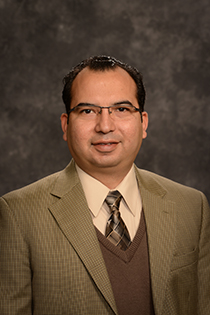
Dr. Raymundo Arróyave, associate professor in the Department of Materials Science and Engineering at Texas A&M University, recently participated in a study sponsored by the National Institute of Standards and Technology.
The Minerals, Metals and Materials Society published the report, “Modeling Across Scales: A Roadmapping Study for Connecting Materials Models and Simulations Across Length and Time Scales,” in June 2015.
Arróyave collaborated with a team of 14 international experts representing industry, academia and government. The members of the team addressed the current state of the materials science innovation, gaps and limitations, and recommendations for addressing them. The team presented the study at the World Congress on Integrated Computational Materials Engineering in Colorado Springs, Colorado, in June.
One of the recommendations of the study encourages the development of canonical experiments that can be used to validate different approaches to multi-scale modeling with diagnostics and robust datasets across multiple scales. In addition to addressing the current state of materials modeling and simulation, the research team identified more than 30 key gaps and limitations ranked by potential impact from atomic to quantum scales.
Society’s need for safer and more efficient structures requires materials scientists to accelerate the design and development of advanced materials. Bridging the gap between length and time scales in materials models and simulation can significantly reduce time and cost of development of improved materials and manufacturing process innovations.
“The recent advances in software and hardware infrastructure make it more likely that computational approaches will become an increasingly important component of any accelerated materials discovery effort,” said Arróyave. “I hope that the study motivates more research into the fundamental outstanding scientific problems that we still do not know how to tackle. Rare events, highly localized in space and time, as well as emergent behavior, are still beyond the frontier of what we can do at both the computational and experimental levels.”
Arróyave directs the Computational Materials Science Laboratory. The lab uses computational materials science tools to investigate material properties at different scales of length and time.